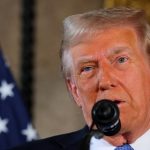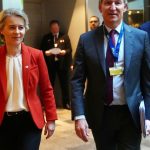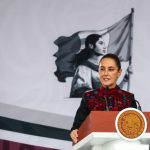The month of August, which is already showing the first meteorological instability of autumn in Russia, is full of decisive memories for the course of events of the past decades, which are in turn related to the upheavals of our times. On August 19, 1991, the KGB attempted a coup against President Mikhail Gorbachev in Moscow, which marked the beginning of the disintegration of the Soviet empire. Five months earlier, a referendum had been held in which the vast majority of citizens in the fifteen republics had voted in favor of maintaining the Soviet Union, and the empire still seemed to be in a position to overcome contradictions and divisions and remain a superpower with a powerful atomic arsenal, capable of controlling half the countries of the world as if they were satellites.
The failure of the attempt to remove Gorbachev by threatening the White House on the banks of the Moskva River with tanks and the triumph of Boris Yeltsin, who waved the Russian flag in front of a jubilant crowd, without any casualties or destruction, opened up a completely different scenario: the “strongmen” were now powerless, and only five days later, on August 24, 1991, Ukraine declared its independence and, in effect, the end of the empire, which dissolved four months later, on December 25. The red flags with the hammer and sickle (now preserved in a museum) were removed from the Kremlin towers forever and were replaced by the tricolor of the Russian republic, which was soon transformed into a federation, and the first and last Soviet president retired.
However much one may try to attribute responsibility for these events to the individual personalities of Gorbachev, Yeltsin or the failed coup-makers, it is clear that a reality as gigantic and powerful as the Soviet Union could not depend only on the incapacity of some or the audacity of others. Many factors determined the subsequent evolution of Russia: economic and administrative problems, widespread corruption, military failures, ecological catastrophes such as the explosion of the Chernobyl power plant, the crisis of Marxist-Leninist ideology, the growth of demands for national identities and many others.
The impact of the collapse left Russians with resentment towards the West, but the truth is that the historical adversaries did not seek the complete dissolution of the Soviet monster but to maintain a two-sided world order. The West has saved the empire many times, as in the Second World War despite Stalin’s initial alliance with Hitler, in the Cuban missile crisis, which ended with the embrace between John Kennedy and Nikita Khrushchev, and even the catastrophic invasion of Afghanistan, which was resolved at a regional level without escalating into a new global war. Not even the fall of the Berlin Wall in 1989 foreshadowed the disappearance of the Union, despite the reunification of the two Germanies and the decisive push towards secession by the other countries of Eastern Europe, including the Baltic countries and, naturally, Ukraine.
After 1991, successive stages of disintegration continued with the Chechen war, and once again the West sided with Moscow and did not support the independence of the smaller peoples of the federation. Now we have reached a new stage of the process that began 33 years ago with the war in Ukraine and the revolution of the entire global geopolitical order, but it is still unclear what the outcome will be – a truly “multipolar order” or just a new Iron Curtain between East and West.
Orthodox Patriarch Kirill (Gundjaev) of Moscow has sought to turn the memory of August into a celebration of the rebirth of Great Russia, recalling the solemn consecration of the Cathedral of Christ the Saviour which took place precisely on 19 August in the Jubilee Year 2000, where the Council was held which declared the canonisation of the last Tsar Nicholas II and approved the document on the Social Doctrine of the Church, the manifesto of “Orthodox sovereignty” which has guided the policy of the new President Vladimir Putin in the following quarter of a century. Russia’s largest Orthodox church, built over several decades to celebrate the victory over Napoleon in 1812, had been blown up by Stalin in 1931, when the Georgian dictator assumed absolute power.
Following the collapse of the USSR, the reconstruction of the cathedral next to the Kremlin was the first symbolic act of restoring imperial identity, and work began following an agreement between Patriarch Alexei II (Ridiger) and the then all-powerful mayor of Moscow, Yuriy Luzhkov, in anticipation of the celebrations of the 850th anniversary of the founding of the capital, with a view to replacing Kiev as the “mother city” of all the Russias. As early as August 1996, a few months before the following jubilee year, Alexei celebrated the first liturgy in the lower chapel of the Transfiguration, and work was completed in 1999, when power was already passing into the hands of Vladimir Putin.
At that time, Kirill was the metropolitan-oligarch who was trying to revive the destiny of Russia and its Church, humiliated by accusations of collaboration with the atheist power and undermined by waves of proselytism by Catholics and Protestants from all over the West, in the turbulent “religious renaissance” of the 1990s. After fifteen years of patriarchate, today Kirill does not hesitate to take full credit for the reconstruction of the cathedral and for all Russian ecclesiastical power, recalling during the celebration that at that time “he had explained to Mayor Luzhkov the colossal lack of churches in the capital, which was at the limit of the statistics of ecclesiastical spaces in relation to the number of faithful.” Now, however, he proudly praises “the extraordinary monument that stands in the center of Moscow,” whose significance lies in the fact that “even people who seem far from the faith have understood that it is necessary,” because in any case “they are linked to the faith by their own origin, education and belonging to the Russian people.”
From the cathedral, the project of the “Two Hundred Churches” to be rebuilt in Moscow was carried out and completed mainly thanks to Luzhkov’s successor, the current mayor Sergei Sobyanin, in office since 2010, together with the Patriarch himself. Kirill recalls that “Moscow is the only megalopolis in the world where so many churches are being built, while in the rest of the world they are being closed, which testifies to the growth of faith in our people”; although statistics show that in Moscow, and throughout Russia, the more churches are built, the fewer people visit them. In fact, the Patriarch insists that “we must not limit our preaching to the space of the churches”, but rather involve the whole people more in ecclesiastical life.
The memory of August thus turns from dissolution to rebirth, but these days another event has forced Russians to rethink the uncertain course of their destiny. Indeed, on the morning of 1 September 2004, the most tragic terrorist attack in recent Russian history took place: the massacre at the school in Beslan, North Ossetia, at the start of the new school year, with 1,100 hostages held by terrorists for three days and explosions and furious shootings that left 27 terrorists dead and 314 victims among the hostages, of whom 186 were children. For the first time in twenty years, President Putin recently visited the “Mothers of Beslan” during a propaganda tour in Chechnya, precisely at the time when the Ukrainian offensive in the Kursk region was taking place.
Putin was determined to show his superiority over Ukrainian claims, recalling the same motivations that had brought him to power when he had promised, as prime minister in 1999, to wipe out all terrorists. The crowds in the Caucasus were reminiscent of those following Yevgeny Prigozhin’s coup attempt last year, when Putin (or a look-alike) embraced the Ingush to celebrate his indestructible union with all the peoples of Russia. He had promised the mothers of the children killed in Beslan at the time to “tell the whole truth” about the massacre, but their representatives lamented that the promise had not actually been kept. In a dialogue that was not broadcast on television, the president replied uncomfortably that he would ask Alexander Bastrykin, head of the investigative commission, to resolve the matter “as soon as possible.”
In obvious confusion, Putin then inaccurately recalled the number of victims of the attack, speaking of “334 people, including 136 children” – fifty fewer than those who actually died. He then hysterically tried to blame “the forces from abroad that tried to justify and help the terrorists, even with moral motivations”, linking it to current events, because “our enemies continue to attack our country, instigating and provoking criminal actions in the Kursk region, in the Donbass and throughout Novorossiya” – that is, Ukraine. By recalling the events of the past, Putin and Kirill hope to brighten the face of the new, victorious Russia, making even more evident the confusion and impotence of an increasingly uncertain and contradictory system.
“RUSSIAN WORLD” IS ASIANEWS’ NEWSLETTER DEDICATED TO RUSSIA. DO YOU WANT TO RECEIVE IT EVERY SATURDAY IN YOUR EMAIL? SUBSCRIBE TO THE NEWSLETTER AT THIS LINK






![[Img #74676]](https://thelatestnews.world/wp-content/uploads/2024/12/Laser-artificial-neuron-150x150.jpg)





Add Comment